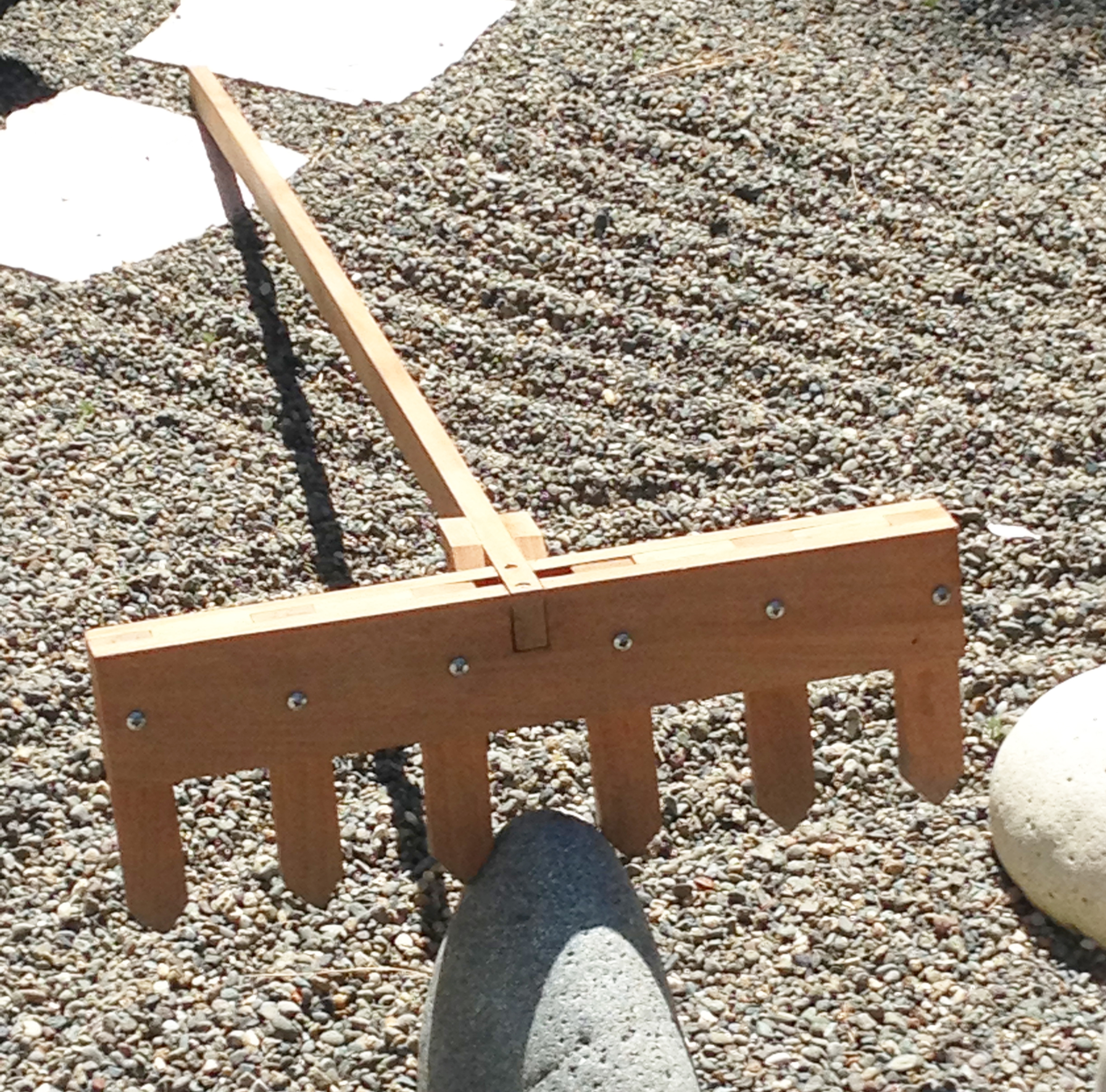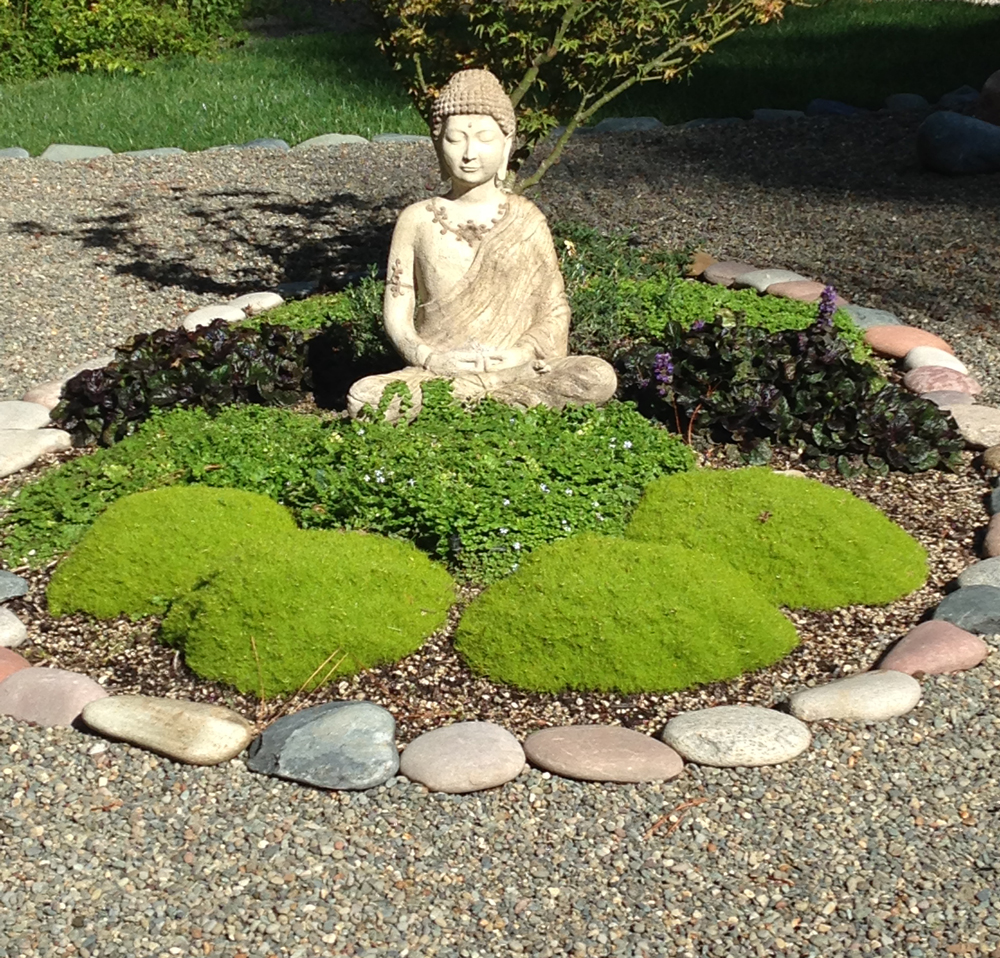When Paul Jackson’s son graduated from high school, he received an unconventional but welcome gift – six yards of pea gravel.
“He wanted a Zen rock garden,” Jackson said. “He pointed out the place in the backyard. I said, ‘OK, go build it.’ So, he did and when he went off and got married he left it for us to take care of.”
Jackson and his wife, Barbara, learned to love the Japanese-style garden and its tranquility. The maintenance, which consists of raking the gravel and watering a few plants, was minimal. Built in 1994 at the Jackson home in Anchorage, Alaska, the couple maintained it until 2013 when they moved to Grants Pass.
To learn the new plant palette they’d be working with in the Rogue River Valley and develop a new network of friends, the Jacksons decided to take the Oregon State University Extension Service Master Gardener course. In particular, they were interested in a low-care, low-water landscape with minimal lawn.
“We had two areas being watered by a sprinkler system and they were full of moss,” he said. “I thought, ‘Let’s turn off the sprinklers, take out sod and put in a little Zen garden.’”
The Jacksons’ 3-year-old garden is a reflection of a style developed in China in the fifth through eighth centuries. Influenced by Taoism, the gardens manifested the myth about five islands in the ocean where eight immortals lived in harmony with nature. The design caught on in Japan, and in the Muromachi Period from 1185 to 1573 gardens evolved to encompass the Zen style with Buddhist monks the primary designers.
One of six styles of Japanese gardens, which include the promenade, tea and pond gardens, the Zen rock garden represents a miniature and idealized view of nature, Jackson said. Rocks fill in for mountains and islands; gravel for water. Following mythology, the crane and turtle symbols, which signify longevity, also find their way into the landscape. Other elements sometimes – but not always – include pagodas, lanterns, Buddha statues, water features and plants.
In his garden, Jackson created a middle island with a lion’s mane Japanese maple, ajuga, moss and lithodora. He’s rigged up a drip system so a hose doesn’t have to be dragged across the gravel. Sitting cross legged in front of the tree is a Buddha statue. Other than that, a pagoda and a seating area where his wife often sits to enjoy the sound of birds and some contemplative time, the garden is simplicity itself.
“There’s something appealing in the simplicity of Zen rock gardens,” said Jackson. “It has a pleasing effect to the eye. All Zen gardens are designed to be asymmetric. There are no angles or straight lines. Nature is asymmetric, too.”

He finds peace in raking the garden, which is what Buddhist monks found, too. They experienced a meditative quality in the minimalism of a Zen garden and by raking the gravel that represents water.
Jackson, who shares instructions to build a Zen garden, advises keeping it simple.
“Don’t worry about being too formal and exact,” he said. “Make it the way you want it.”
How to Build a Zen Garden:
• Keep things simple when creating the design;
• Lay out area with stakes, flags or spray paint;
• Clear area of grass, rocks, etc.;
• Cover with landscape cloth;
• Build fence if one is included in the design;
• Determine how much pea gravel or sand needed;
• Determine size and number of boulders. They should be different sizes but of the same material. Decide where to place them.
• Dig in the bottom third of the boulders;
• Decide where to place plants, if used. Be sure to install edging to keep soil out of gravel;
• Run irrigation lines if needed;
• Add any water feature;
• Add pea gravel or sand;
• Build sitting area if desired;
• Place flagstones to sitting and/or plant areas.
Plants for a Zen Garden:
• Heavenly bamboo (Nandina);
• Real bamboo (consider clumping bamboo, which will not run);
• Conifers;
• Japanese maples;
• Mosses;
• Sedums;
• Other ground covers;
• Azaleas, camellias and rhododendrons.
Zen Rock Garden Rakes:
Rakes for Zen rock gardening can be difficult to find. If you decide to make your own, Jackson suggests using hardwood such as oak because it will last longer and have plenty of weight so you don’t have to force the tines into the gravel as you rake. Also, use 1-x-2 lumber for the tines and set them approximately 2½ inches apart to create a nice pattern in the gravel. Refer to photo for details.



Hi there, Great tips by the way and thank you. I did have a
question though. I’m hoping you can answer it for me since you seem to be pretty
knowledgeable about gardening. What’s the best herbicide to kill a garden full of
various types of plants? I’m trying to get rid of weeds without damaging my vegetables.
If you had some insight I would greatly appreciate it.
Hi there. Which spray you use depends on the plants. The two most common herbicides are Roundup and Crossbow. I prefer Roundup because it is less toxic. You should not let either get on your veggies. There are also organic (also called natural) products to choose from. Go to a good garden center and talk to someone to find out which would work on the plants you have. Read the label; it will tell you the plants it is effective on. Another option is to pull up as many weeds as possible and cover the area with cardboard and top with compost or mulch. No sunlight can reach the weeds so they will die. For the herbicides, be sure to use them safely and only apply as much as the label says to. Hope this helps. If you have more questions, ask away!